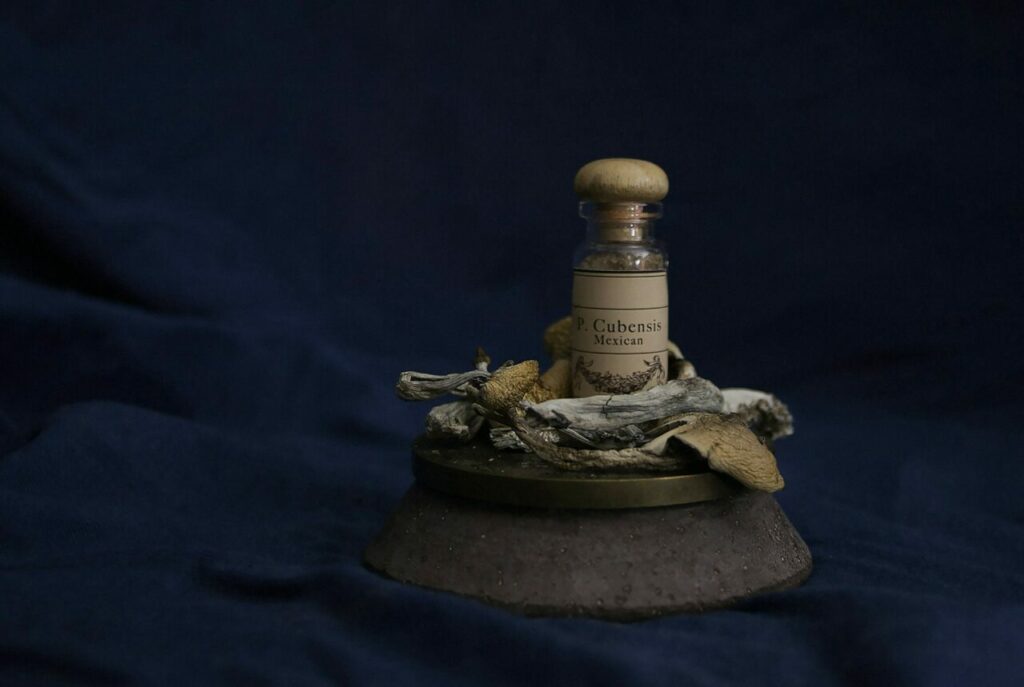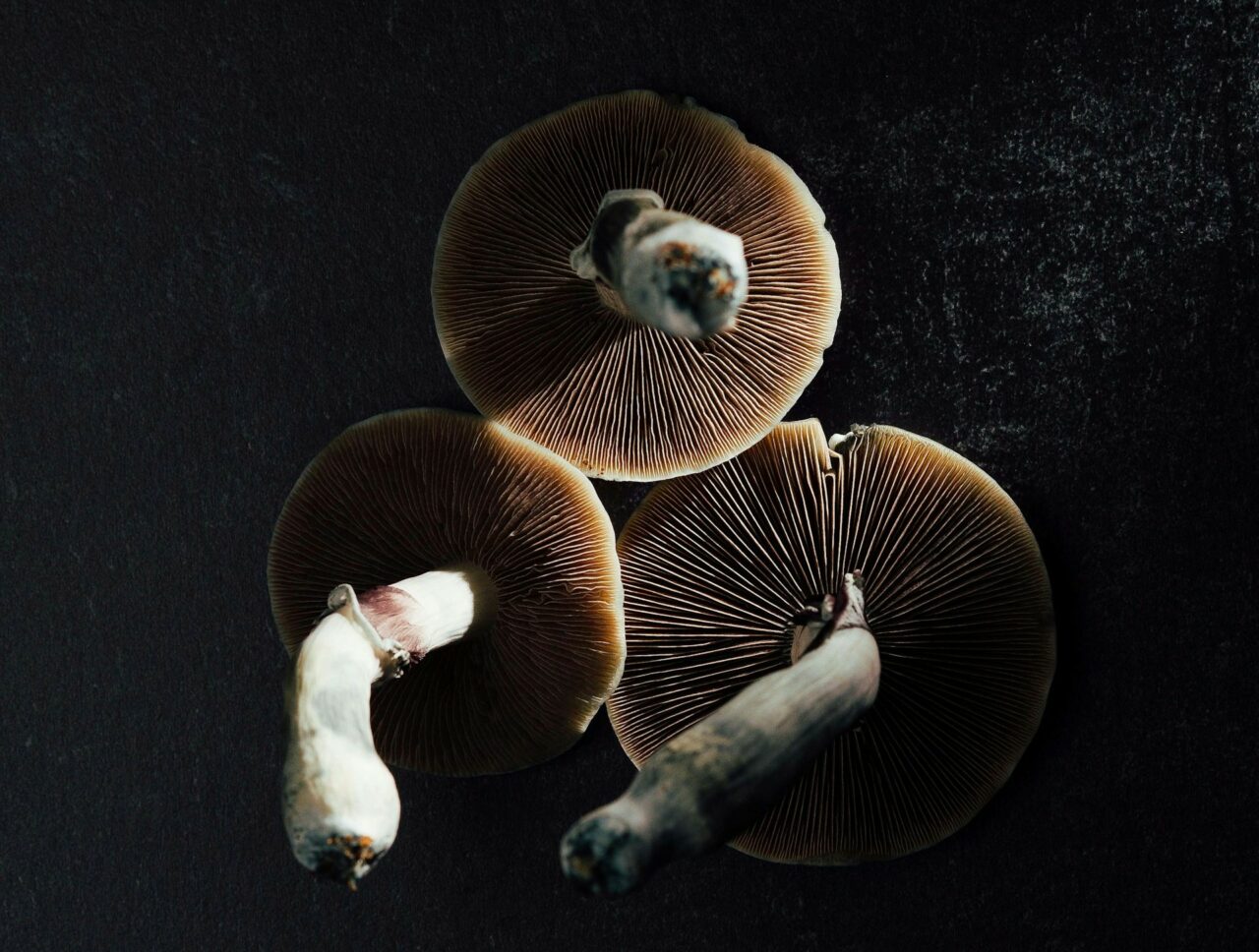With the growing interest in natural magic mushrooms in Canada, there has been a simultaneous surge in the popularity of lab-created psilocybin products. While researchers favor these products for their consistent dosages, they might not be aware of the higher potency of natural mushrooms compared to their lab-manufactured counterparts. Experts have pointed out significant distinctions between the two, including differences in strength.

Key Takeaways:
- Over 180 natural mushroom species offer diverse potency levels, influenced by factors like species, consumption method, cultivation, and individual tolerance.
- Synthetic psilocybin, a lab-engineered variant of the natural compound, is manufactured under controlled conditions to ensure consistency and purity, primarily for mental health treatment research.
- The combined effects of various compounds in psychedelic mushrooms, such as psilocin and baeocystin, can create a more profound and intense experience than a single compound alone.
Emerging Market: Varied Forms of Psychedelics
The demand for psilocybin mushrooms in Canada is escalating swiftly, particularly for treating mental health disorders like OCD, depression, PTSD, and anxiety. In response, provincial governments have started contemplating the decriminalization of recreational use.
In 2020, Canada allowed limited medicinal usage of these mushrooms under specific circumstances. Just a year ago, the federal government permitted certain terminally ill patients to use these substances for symptom management.
These forward-thinking initiatives have given rise to synthetic psychedelics.
The Ongoing Debate
The continuous discussion about natural versus lab-crafted psychedelics revolves around safety, accessibility, and cost issues.
While some advocate for natural psychedelics due to their holistic and traditional experience, others favor lab-made versions for their standardization suitability for medicinal use, combined with guaranteed dosage control and quality assurance.
Even though lab-created psychoactive substances may enhance accessibility, there are ongoing concerns about potential drug monopolization. Critics express fears that this could lead to less greater expenses for users.
/wp:paragraph –>A Comprehensive Guide to Psilocybin
Among the various naturally available psychedelic substances today, Psilocybe cubensis, commonly known as a magic mushroom, stands out. Magic mushrooms, recognized for their mind-altering effects, exist in a variety of strains such as Golden Teachers, Amazonian Cubensis, Blue Meanies, and others, with Psilocybe cubensis being the most notable family.
Decoding the Psychedelic Experience
Psilocin, a compound extracted from this mushroom, transforms into a different chemical after being metabolized by the liver. This new compound interacts with the serotonin receptors in the brain, notably the 5-HT2A receptor.
This receptor is instrumental in managing mood, cognitive functions, and perception. Its interaction with the newly formed compound alters the standard functioning of serotonin pathways, resulting in modified visual and auditory perception, shifts in thought processes, and emotional states. This event leads to an uplifted mood, enhanced creativity, introspection, and the characteristic “psychedelic” experiences.
The Two Main Categories
| Natural | These are found in over 180 species of fungi, with the potency varying based on the mushroom species. Psilocybe cubensis is a popular variety. The effects can vary depending on how it’s consumed, cultivation techniques, and individual tolerance. |
| Synthetic | These are fabricated in labs and are chemically identical to natural compounds. They are produced in controlled conditions to ensure uniformity and purity. They are increasingly being explored for clinical uses, particularly in mental health treatments. |
Contrasting Nature’s Offering and Science’s Invention: The Key Differences
The natural versions of these substances are found in specific species of magic mushrooms. Indigenous communities in both North and South America have utilized these mushrooms in their rituals and ceremonies, viewing them as sacred or divine.
- Derived from plants and mushrooms
- Employed in ancient rites and healing rituals
- The unique genetic composition of each strain determines its potency
In contrast, a
Synthetic drug is
These substances closely mirror the natural chemical composition of specific compounds. Expert pharmaceutical professionals meticulously design them in controlled settings to maintain precision. While they function similarly to natural counterparts, they can alter the overall psychedelic experience.
- Produced by expert pharmaceutical personnel
- Modern innovations intended for medicinal use
- Precise strength due to regulated manufacturing procedures
Organic substances possess more advantages due to their bioactive compounds. Various mushroom types contain different levels of psilocybin and other compounds, leading to a range of effects.
Researcher Insights
A study by the Hebrew University revealed that psychedelic mushrooms have a more potent and lasting effect on synaptic plasticity than synthetic versions. The research team explored the drug’s influence on mouse brain activity by studying behavioural and brain chemical changes.
The study discovered that the extract reduced head twitches and promoted the formation of new brain connections. This suggests that the mushroom extract could provide more advantages than a single compound.
The researchers also introduced the “entourage effect” concept. They described it as the instance where the combined effect of multiple compounds in psychedelic mushrooms exceeds the effects of individual compounds. In terms of mushrooms, psilocin, baeocystin, and other tryptamines may collectively contribute to an intense experience.
These additional chemicals are absent in lab-produced substances, leading to subtle variations in effects, even if the psychedelic content is identical.
Expert Opinions on Nature’s Superiority
Research consistently shows that psilocybin, in any form, offers promising results in treating various psychiatric disorders. A study conducted in 2024 examined the effects of controlled substances on patients with treatment-resistant depression. It reported symptom reduction after administering magic mushrooms.
When used alongside other treatments, organic psychedelics can facilitate deeper emotional processing and insights during therapy sessions, thereby enhancing long-term results.
Researchers from the same university noted that hallucinogenic mushrooms increase synaptic plasticity. They possess a distinct metabolic profile that affects oxidative stress and energy production pathways, unlike lab-created psychedelics.
Implications for the Market
As the body of literature on this subject grows, it could shape Canadian perceptions and buying behaviors related to psychedelics. Programs like Health Canada’s Special Access Program are making promising strides towards legalization and transformation of the therapeutic landscape. Psilocybin-assisted therapy may become a mainstream treatment option in the near future.
The role of organic options is projected to grow in importance in both clinical trials and therapeutic settings. As the country progresses towards harnessing the full potential of organic psychedelics, major breakthroughs in mental health treatments appear to be on the horizon.
How to Safely Procure Shrooms in Canada
- Section 56 Exemption: Health Canada recognizes that patients with severe medical conditions may benefit from psilocybin as an alternative treatment. This exemption is part of the Controlled Drugs and Substances Act.
- Clinical Trials: Preliminary clinical trials have been authorized to investigate the potential of this drug for treating mental health disorders. Participants must meet specific requirements and undergo medical screening.
- Online Market: Psilocybin capsules or edibles can be purchased from online vendors in Canada, but it’s crucial to buy from reliable sources.
Experience the Power of Natural Compounds
Nature is a treasure trove of wonders, with shrooms among them. Instead of turning to synthetic psychedelics, consider the potent and therapeutic magic mushrooms from Canada. Explore the highest quality, naturally sourced shroom strains at Get Magic Mushrooms Canada.
The shrooms we provide not only meet but exceed the industry standard, maintaining their purest and most genuine composition in a dried format. Place your order today and enjoy convenient and discreet delivery to your doorstep.
Frequently Asked Questions
What are baeocystin and norbaeocystin?
Both are tryptamine or indole alkaloids, bearing chemical similarities to psilocybin. As secondary alkaloids in shrooms, they enhance the overall psychedelic experience, though less intensely. Baeocystin and Norbaeocystin have similar chemical structures but differ in their psychoactive properties.
Are organic dried mushrooms included in capsules and edibles?
Variances in experience can arise from the product’s origin. Online dispensaries offer products abundant in organic compounds, facilitating a comprehensive entourage effect. In clinical trials and clinics, synthetic compounds are frequently used in capsule form.
Do natural psychedelics induce more profound experiences?
It’s relevant to note that expecting a deep experience from a natural psychedelic could possibly result in just that. After all, our anticipations, a part of the ‘set’, can guide the journey. Natural psychedelics are often linked with ceremonial traditions, and this ritualistic context can lead to uniquely enriching experiences. These experiences are different in various aspects compared to clinic sessions that involve synthetic compounds.





